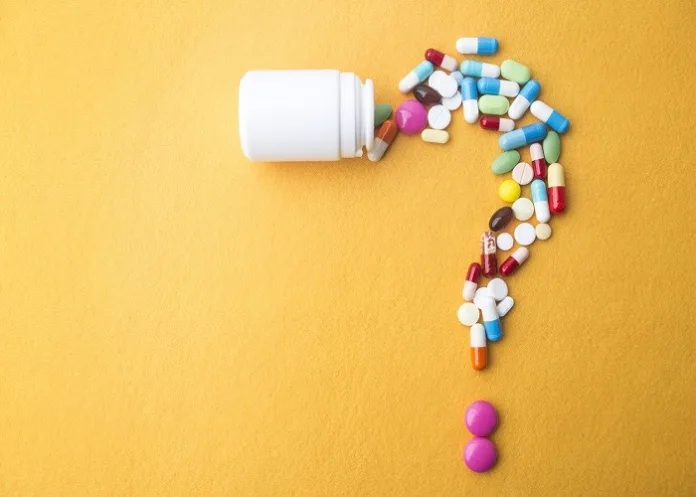Around 7 000 to 9 000 people die each year in the US as the result of a medication error, and although experts say it’s impossible to confirm what percentage of error involves name confusion, and because this has long been a problem in the industry, efforts are now being made to create more awareness about the potential for these mistakes.
Medscape reports that more than 80 pairs of drug names were recently added by the US Institute for Safe Medication Practices (ISMP) to its updated list of confusing drug names, in attempts to increase awareness about the potential for a serious medication error when the wrong drug is given because of names that look and sound similar.
Awareness of these drug names, however, is just the first step in preventing medication mistakes. Healthcare providers should take a number of other steps as well, experts said.
ISMP first launched its confusing drug names list in 2008. The new list is an update of the 2019 version, said Michael Gaunt, PharmD, senior manager of error reporting programmes for the ISMP, which focuses on the prevention of medication mistakes.
The new entries were chosen on the basis of a number of factors, including ISMP’s analysis of recent medication mishap reports that were submitted to it.
The ISMP list now includes about 528 drug pairs, Gaunt said, and is long partly because each pair is listed twice, so readers can cross reference. For instance, hydralazine and hydroxyzine are listed in one entry in the list, and hydroxyzine and hydralazine are listed in another.
Confusing names an ongoing issue
The length of the list, and the latest additions, are not surprising, said Mary Ann Kliethermes, PharmD, director of medication safety and quality for the American Society of Health-System Pharmacists, comprising about 60 000 pharmacists.
“I’ve been in practice for more than 45 years,” she said, “and this has been a problem ever since I started.” The sheer volume of new drugs is one reason, she added.
From 2013 until 2022, the US Food and Drug Administration (FDA) approved an average of 43 novel drugs per year, according to a report from its Centre for Drug Evaluation and Research.
Closer look at new list
Many of the new drug pairs that are listed in the update are cephalosporins, said Kliethermes, who reviewed the new list for Medscape Medical News. In all, 20 of the latest 82 additions are cephalosporins. These include drugs such as cefazolin, which can be confused with cefotetan, and vice versa.
These drugs have been around since the 1980s, she said, but “they needed to be on there”. Even in the 1980s, it was becoming difficult to differentiate them, and there were fewer drugs in that class then, she said.
Influenza vaccines made the new list, too. Fluzone High-Dose Quadrivalent can be confused with fluzone quadrivalent. Other new additions: hydrochlorothiazide and hydroxychloroquine, Lasik and Wakix, Pitressin and Pitocin, Remeron and Rozerem.
Beyond the list
While it’s not possible to pinpoint how big a problem name confusion is in causing medication mistakes, “it is certainly still an issue”, Gaunt said.
Various practices can reduce that risk substantially.
Tall-man lettering
Both the FDA and the ISMP recommend the use of so-called tall-man lettering (TML), which involves the use of uppercase letters (or capitals), sometimes in boldface, to distinguish similar names on product labels and elsewhere. Examples include vinBLAStine and vinCRIStine.
Electronic prescribing
“It eliminates the risk of handwriting confusion,” Gaunt said. However, electronic prescribing can have a downside, Kliethermes said.
When ordering medication, a person may type in a few letters and may then be presented with a prompt that lists several drug names, and it can be easy to click the wrong one. For that reason, ISMP and other experts recommend typing at least five letters when searching for a medication in an electronic system.
Use both brand and generic names on labels and prescriptions
Write the indication. That can serve as a double check. If a prescription for Ambien says: “For sleep”, there's probably less risk of filling a prescription for ambrisentan, the vasodilator.
Smart formulary additions
When hospitals add medications to their formularies, “part of that formulary assessment should include looking at the potential risk for errors”, Gaunt said, and watching for confusing names and similar packaging. “Do that analysis up front and put in strategies to minimise that. Maybe look for a different drug (for the same use) that has a different name.” Or choose a different manufacturer, so the medication would at least have a different container.
Use barcode scanning
if a pharmacist goes to the shelf and pulls the wrong drug, barcode scanning provides the opportunity to catch the error. Many community pharmacies now have barcode scanning.
Educate consumers
Healthcare providers can educate consumers on how to minimise the risk of getting the wrong drug, Gaunt said. When patients have to collect a prescription, suggest they look at the container label; if it looks different from previous prescriptions of the same medicine, ask the pharmacist for an explanation. Some patients just pass it off, he added, figuring the pharmacist or health plan switched manufacturers of their medication.
Technology and automation have helped prevent medication errors caused by the use of the wrong drug and the wrong dose, but mistakes will continue, owing to system and human errors.
Medscape article – Drug Name Confusion: More Than 80 New Drug Pairs Added to the List (Open access)
See more from MedicalBrief archives:
Pretoria teaching hospital rife with paediatric medication errors
US former nurse convicted in lethal drug error sentenced to three years probation
NHS prescription errors contribute to 22,300 UK deaths a year
Meds mix-up blamed for US patient’s hospital death

